All About New Google Analytics Updates 2018
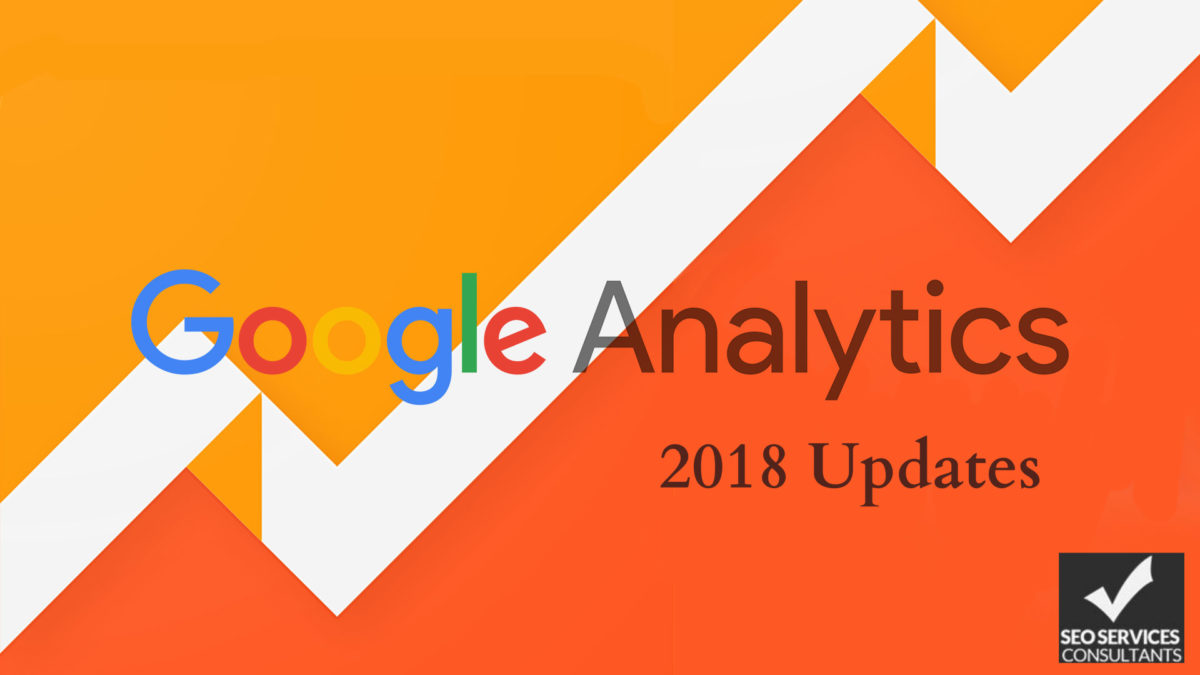
Analyzing the web content is the only way of understanding how well website content is doing. There are multiple tools available that help you to keep an eye out on the content’s performance and one of the best tools that you can come across for analyzing is Google analytics. Its cost-effective too as it comes for free and the best part is that Google keeps on making it better with new updates.
Google has announced a number of new updates this year in the analytics products and all of the new updates are aimed at helping the marketers to understand every customer at a greater extent. The implementation of the machine learning in the Google products has worked as an advantage for Google Analytics and moreover, it comes with the added plus of Analytics intelligence which has been developed since the past one year.

Google also aims to offer website owners with the insight into that impact of the marketing activities in every channel. This has actually always remained the goal but it gets challenging when it comes to tracking. The coming together of Sales force and GA 360 reflects the willingness of Google to work with the companies for the achievement of this goal and to ensure that the dominant position is maintained. The latest updates brought forth by Google Analytics shows all the elements of the trends, with user-level analysis and machine learning never too far from that foreground.
Reporting Focused on Users
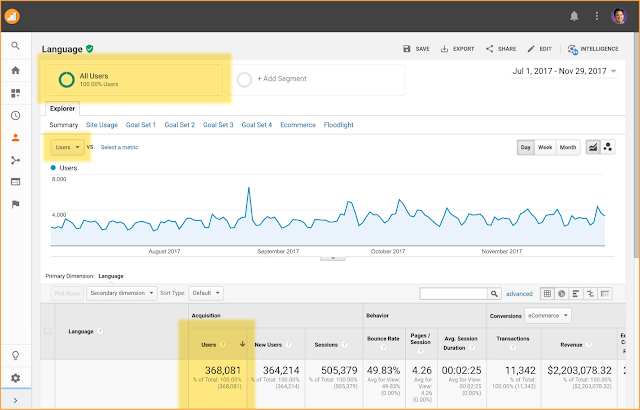
The basics of standard reporting dashboard have been modified to make sure there is more insight in the behavior of the user. This is a huge shift from the typical focus on the sessions because an individual user can have multiple sessions in one day. The digital marketers will definitely welcome that default option of analyzing users along with sessions and you can expect that Google will continue to improve the level of accuracy of the user data. There will be more options for targeting and assessment when Google does so. The two steps for marketers to use this feature are as follows:
-
Click on admin and reach the property settings in the GA account. Select the option which says enable users in report. You will get the user column in the reports after enabling the feature.
-
Combine it with other new features such as Cohort Analysis, lifetime value, and dynamic users to make sure you have a clear picture of how the group of users arrive and interact at your website.
User Explorer: Dimensions and Metrics
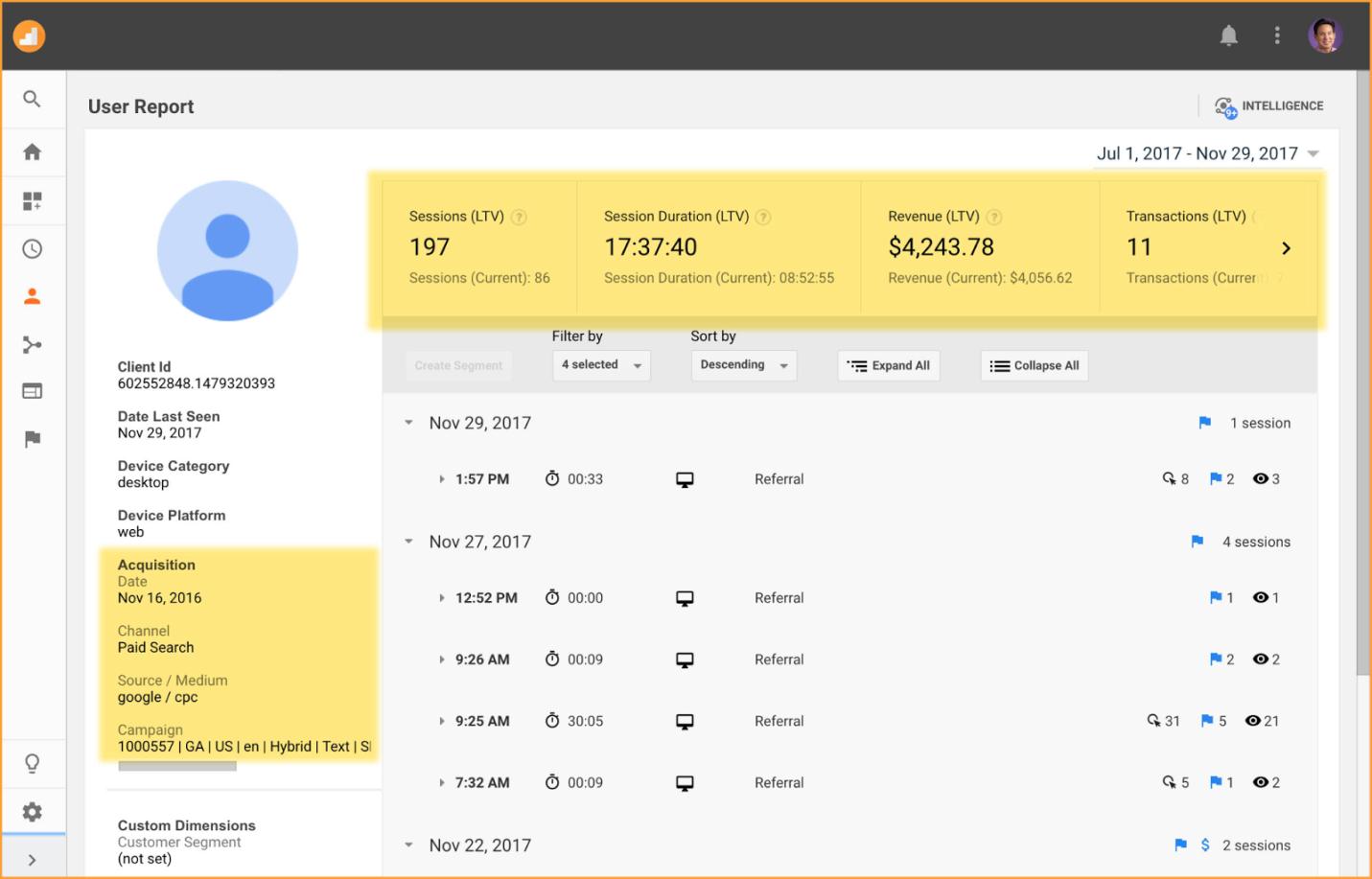
User explorer is something that allows the marketers to single out the user’s behavior down to each session level. It contains massive potential to be used as a major analytics tool. The Google Analytics accounts already have this feature and the data is drawn from the continued usage of user’s cookie.
To explain the user explorer feature a bit further, this is something that gives measurements based on users, for instance, nearby time. The information goes back to the year 2016 and it includes the main ten thousand users. The marketers new in the field need to understand that a large number of the best users can be present in the personnel and understudies.
Google has presently updated this feature with the addition of things like dimensions and lifetime metrics for each user. As you can see from the picture below, it is shown in the form of a dashboard that has all the information about the present, past, and projected future behaviors.
Some of the digital marketers are of the opinion that this amount of detail can be a bit more than what is needed. But the ability of identifying patterns and scaling through a vast set of client identification numbers can bring in great rewards for the marketers. Once you can group the similar customers together, you can customize the marketing actions and messaging, both for remarketing and prospecting. Given below are the steps needed to be followed to use this feature:
-
Outline the patterns in the channels that let important clients to come at your website. It can turn out to be helpful when looking out for new clients who share those similar attributes.
-
Make sure to maximize the value of present customers, who have a highly projected value to remain lifetime, through tailored messages and remarketing.
Audience Reporting
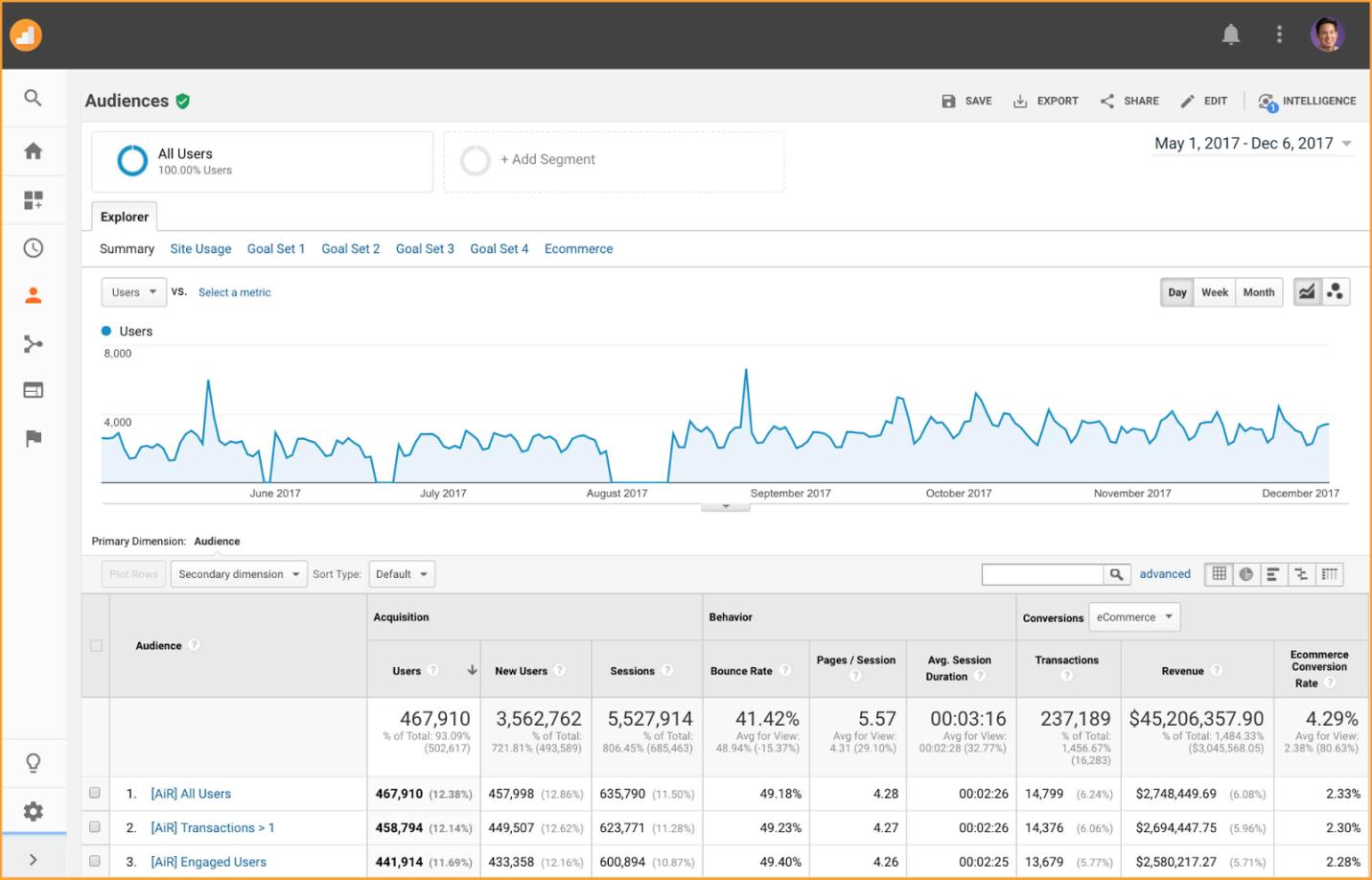
This is perhaps one of the most awaited update to Google Analytics and thus, it is a highly welcomed addition. Users now get to create audiences within the Google Analytics. Then, it can be published within the Analytics platform for further analysis. It helps you to visualize cross-channel data, use audience as the auxiliary measure in the reports and also as a measure of custom reports and portions.
Until now, audiences could be created and published with other such Google properties like AdWords. This tool has been highly useful for the purpose of remarketing but earlier it was impossible to make a report for the audiences within the Google Analytics. This particular feature utilizes the audience as the main dimension and it lets users to compare the performances through varied segments. For instance, you can make an audience for those customers who have actually bought more than six times in the past six months. You can then go on to compare the group with those visitors that take a look at a lot of your content but are yet to make a purchase out of you. The way of using this feature for the marketers is:
-
Make audiences depending on the behaviors that are important for the business and then start monitoring the interaction you have with them over the course of time. You can compare these to get insights about the characters of the highly valued customers.
-
These similar lists can be put up on AdWords and thus you get to make a more direct connection from analyzing to taking action. If you notice recurring trends in the particular client groups that you would like to highlight or change in your Google Analysis report, you can do this easily by hitting that group of audience through Google AdWords.
- Utilize these audience lists as your basis for testing optimization of the conversation rates.
Conversion Probability
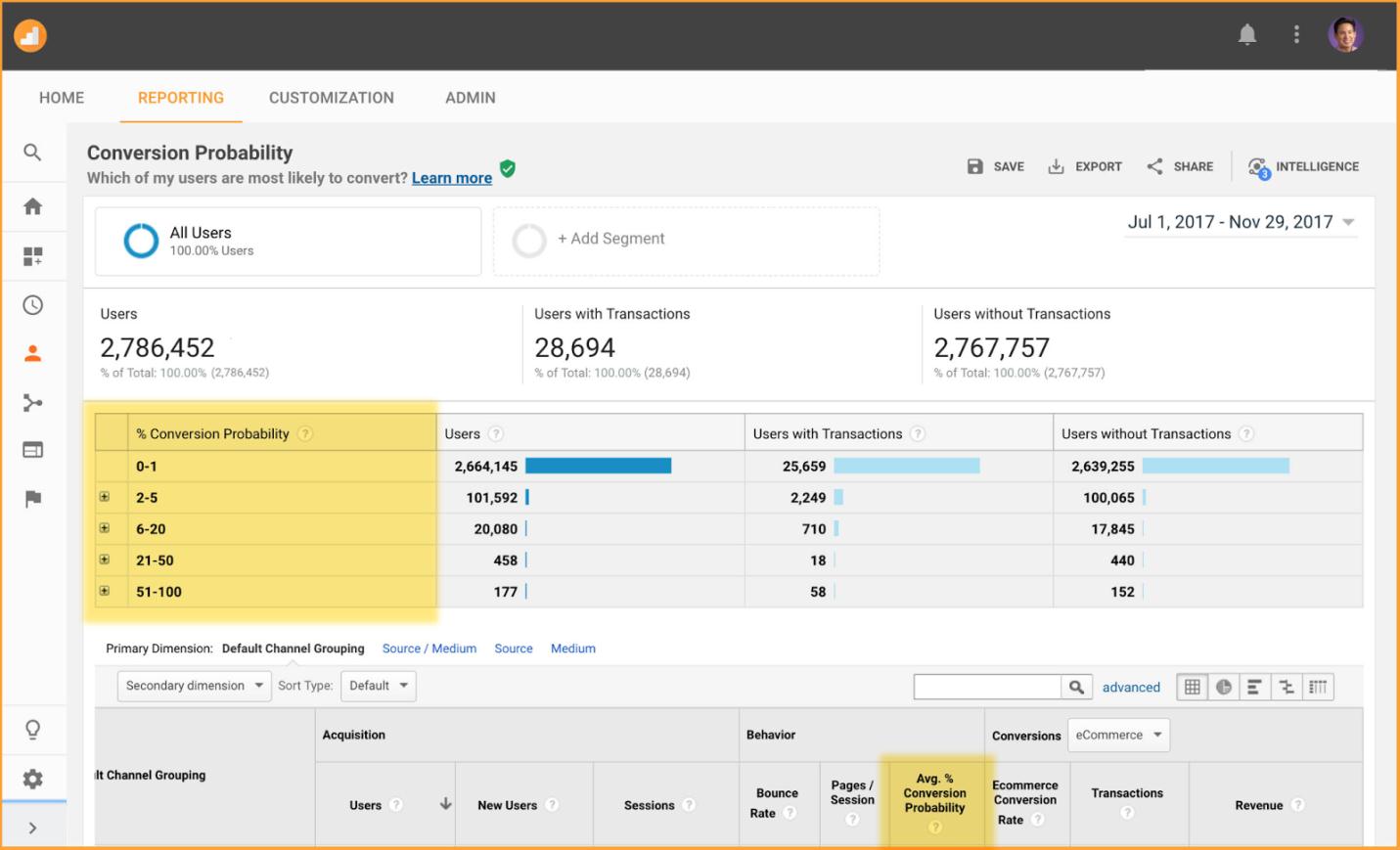
The fact that this update has the most capability of having an impact on the return on investments of the marketers makes this one the most exciting of all the updates discussed before.
By an analysis of the past data of your website and naturally understanding the patterns that exist in between the variables of the set of valuable customers, Google can help you to identify the recent visitors to a website along with the utmost probability for a conversion in the future.
It was achieved in the previous years through a number of means and mostly by using Google Analytics premium pack, Big Query, and analysis of logical regression. Many of the paid media management forums use this kind of machine learning to assist with bidding management similar to Google AdWords. Incorporation of this tool in the standard platform of Google Analytics will enable many of the users will now get to avail the predictive analysis about the buyers.
Along with the changes that have been listed so far, you can now identify how this particular tool can fit in the wider picture. Google utilizes machine learning for the identification of the future buyers, which the website owners can utilize to make audiences listing for remarketing and analysis. The feature will roll out to all of the accounts under beta over the course of the next months, so it is something that is worth checking out. The way of using this feature for the marketers is the following:
It begins with the identification of the traffic quality that is brought in by the marketing activities of your business. You will get the average percentage conversion metric which will show this in the conversion reports.
In terms of remarketing, Google offers a few tips of its own. According to Google, the benefits are clear. The digital marketers can make remarketing listings that target the users who are highly likely to buy the product or service and then reach out to those users by means of either marketing campaigns in DoubleClick or Google AdWords or website experiments in optimization.
When you take a look at the group of updates Google has rolled out for the marketers, the advantage is evident Google is taking the pain to utilize the machine learning abilities for creating a deep understanding of each user. The section for predictive analysis can actually turn out to be highly profitable, specifically for the company with the target technology that is as effective as that of Google. The latest add-ons to Google Analytics will see the abilities extend to an audience base that is much wider than anyone has expected ever before. The good news is that Google is not going to stop at these four updates and you can expect more in the years to come.
Author: Andrella
I am Andrella. I am a internet marketing consultant and a writer who write about latest digital marketing trends. My motive is to provide useful information to users which helps them to grow their online business marketing needs.

